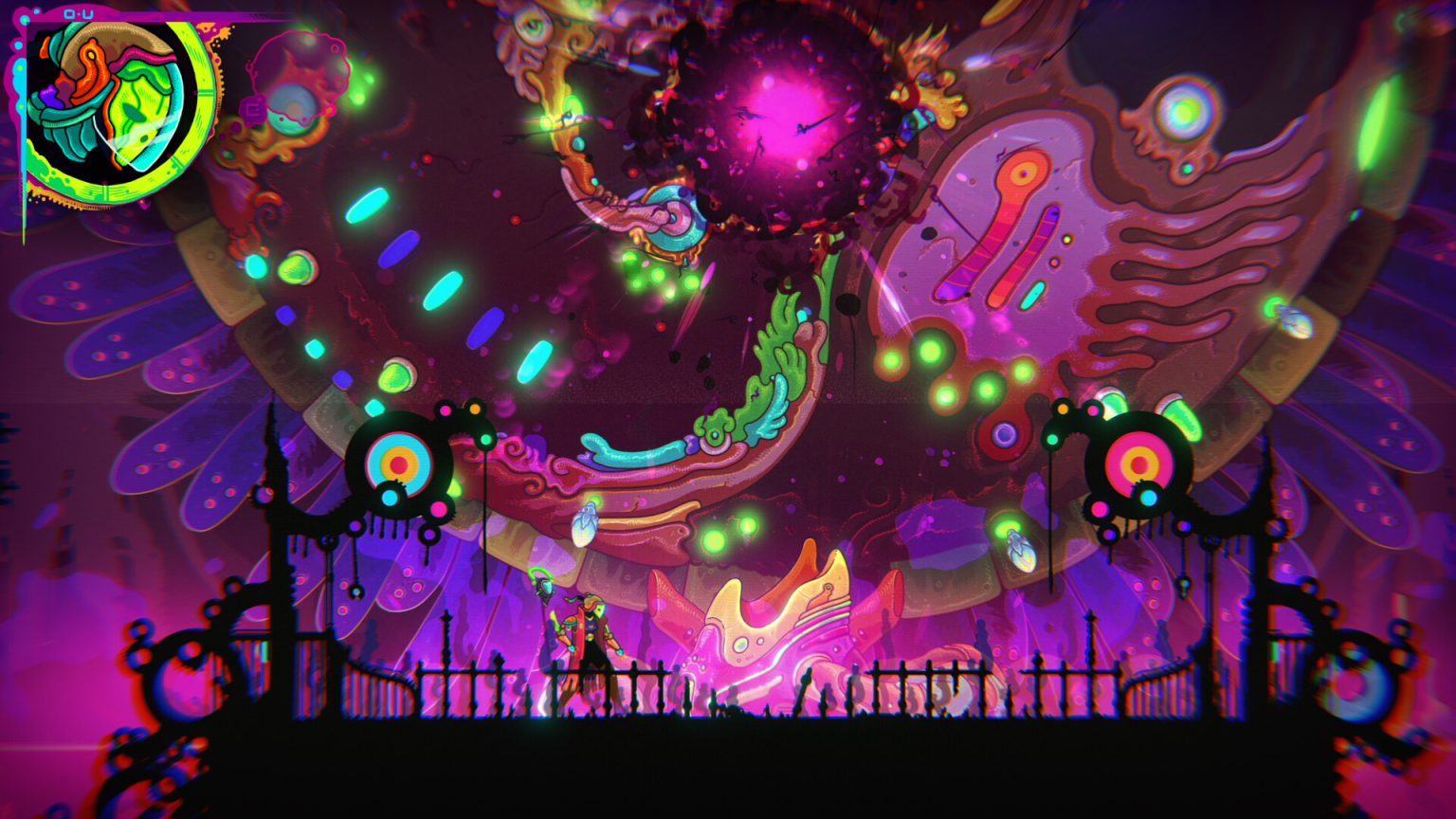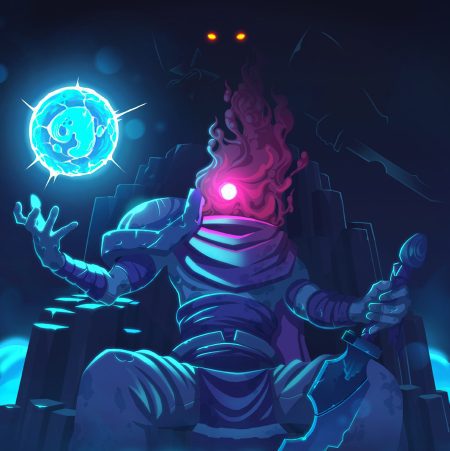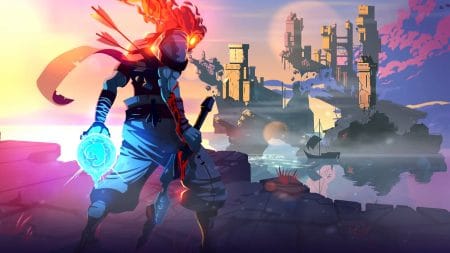Hadoque’s debut title Ultros is a stunning, colorful Metroidvania. From its opening moments, the game draws the player in with its wondrous color palette and captivating music. Traversing its world—known as the Sarcophagus—feels familiar if not a bit uncanny for those who have played other recent genre titles, like Dead Cells or Hollow Knight. In a crowded and competitive genre, Ultros stands out as a memorizing, psychedelic adventure.
The combat of Ultros is fast, intimate, and violent. The game carefully balances instances of destruction with peaceful moments of gardening and meditation. It realizes the potential of its gameplay mechanics, story, and secrets through multiple loops, giving the player incentive to return for each cycle. The result is a game that thrives in its multi-layered worldbuilding.

Unraveling Loops
Ultros opens with its silent protagonist, Ouji, waking up unarmed on the Sarcophagus. Moving right across the screen, Ouji finds a water-like substance dripping into a puddle. She stares into her reflection like Narcissus at the fountain. Running left reveals a dangerous, unraveling path that guides her deeper into this strange world.
Players become familiar with this opening moment as they relive it over and over again. Ultros takes place over many loops, but not in the same way as other death-heavy genres you’re familiar with. The game isn’t a roguelike per se, nor is it a Soulslike—instead, it’s something wholly unique.
Each new loop forces players to lose their abilities, but the world itself isn’t procedurally generated. After releasing one of the eight Shamans from their pods and returning to a room at the center of the game’s world, Ultros sends players back to the beginning without a weapon or their latest traversal abilities, then prompts them to do it again.
The Sarcophagus, a cosmic space uterus carrying the being Ultros within, is full of stunning areas, wondrous plant life, and interesting characters. Its sprawling paths and unique interactions keep players on their toes as they uncover the multiple layers of its world. I found it equal parts easy and frustrating to get lost in the Sarcophagus. Often, I could see where the next Shaman or side-quest objective was on the map only to discover they were not currently accessible.
The Sarcophagus, a cosmic space uterus carrying the being Ultros within, is full of stunning areas, wondrous plant life, and interesting characters.
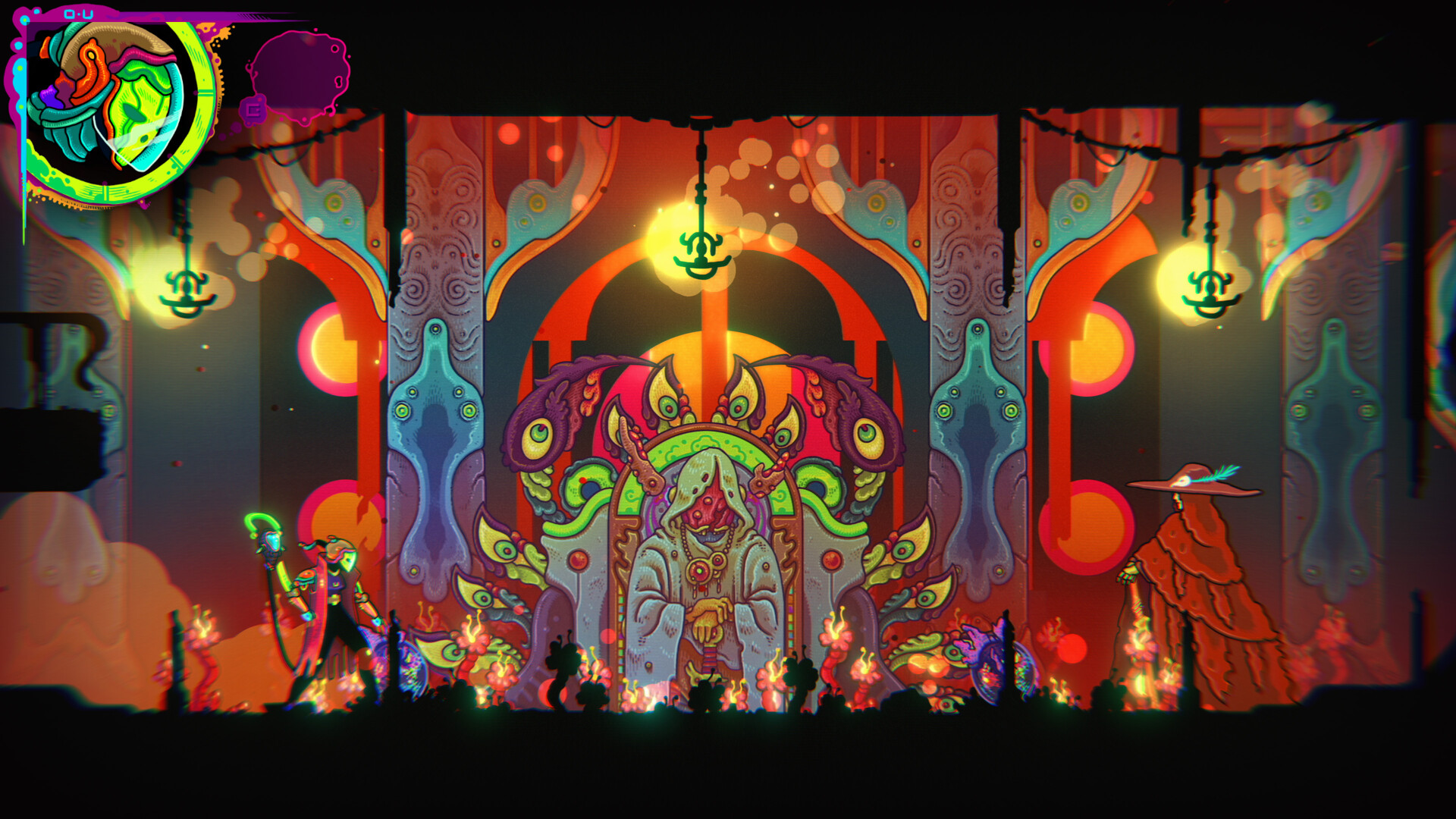
Tools of the Trade
Ultros presents multiple traversal tools, as well as a unique skill tree known as the Cortex system. At the start of each loop, the blade weapon is always quickly available, respawning in the same place each playthrough. The player’s Extractor multitool, which opens access to different areas as it gains new abilities, is never far from the beginning of a new cycle.
As players unlock more tools in their Extractor, they can extend their time during loops by avoiding that central room. The game further reveals its choice-driven gameplay, as this tool allows players to pull back the many curtains of the Sarcophagus’ secrets. The Extractor quickly becomes the player’s best friend as each new unlock after freeing a Shaman opens new pathways letting them move forward.
The combat is simple, fast, and brutal. The game’s close-up 2D camera helps to further capture the brutality of its fights. Many conflicts can be solved by focusing on a couple of button combinations, but Ultros rewards players for using a combination of different attacks on enemies. This variety also proves useful for defeating bosses, as each offers its own puzzle-like challenge.
These rewards take the form of viscerally described edible remains of slain enemies. Consuming these remains restores health and simultaneously contributes to the four stats necessary to level up the Cortex system. This skill tree allows players to gain new combat and platforming abilities, though most of these skills reset at the start of every loop. As players explore, however, they will find Memory Locks that allow them to keep certain abilities between runs. They aren’t restricted to their initial selection either, as they can detach the Memory Lock and attach it to another unlocked ability.
What begins with a blade quickly becomes so much more. After all, this is a Metroidvania, so the new tools and abilities that open up novel places are part of the appeal. Ultros keeps the player coming back to each loop not just to spend more time in its intriguing world and beautiful vistas, but also to let them play with their new toys.
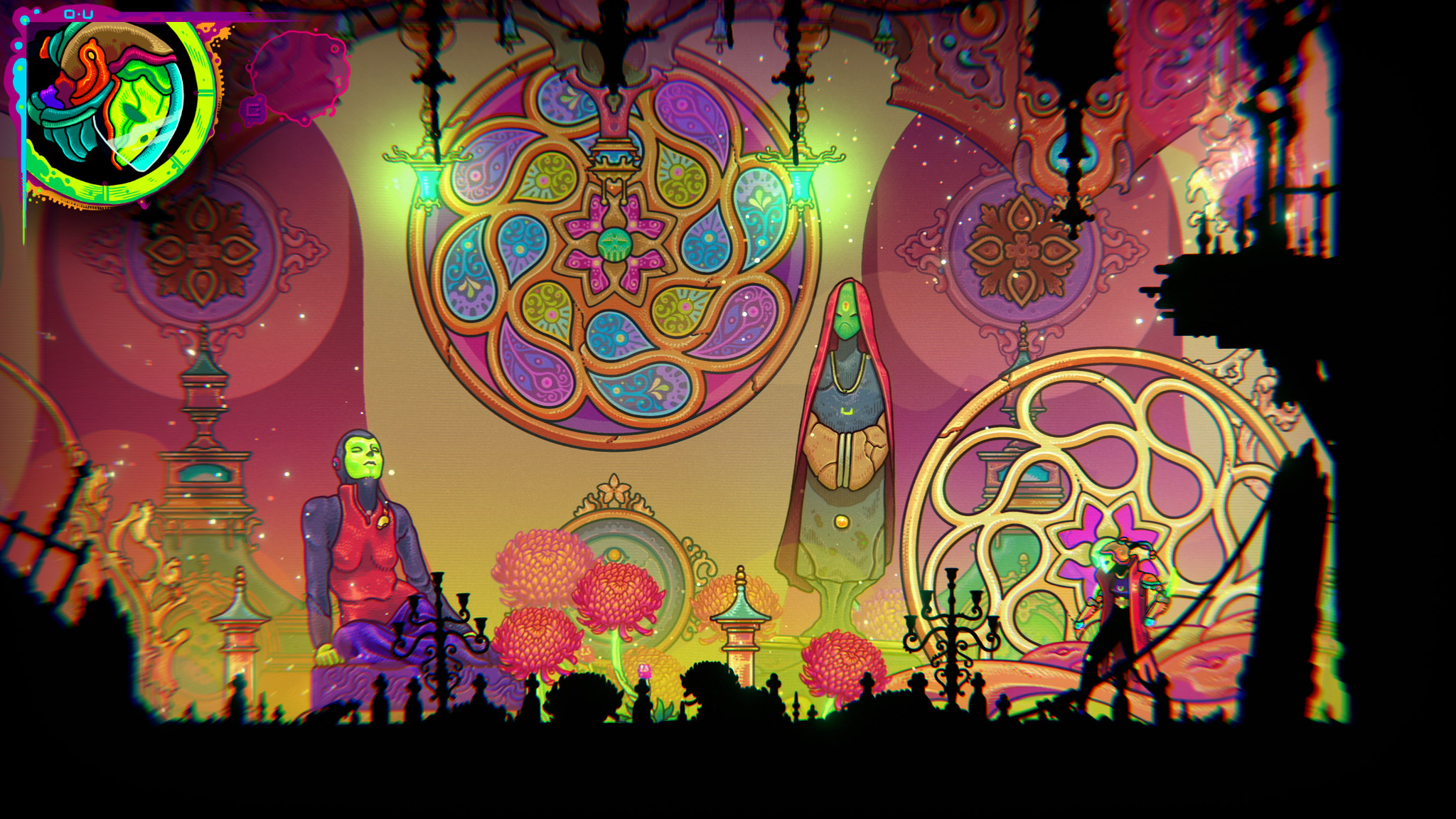
Finding Balance
As players continue their journey through the Sarcophagus, they uncover its range of possibilities. Early hours in the game—essentially through the game’s first ending—encourage violence in a way that, narratively, feels discomforting.
While the game presents the player with a blade and engrossing close-quarters combat, it also offers an alternate, more peaceful route via a character named the Gãrdner. This NPC provides insight into the importance of plant life, planting seeds, and nutrient-rich soil. They have a connection to the natural world of the Sarcophagus and offer recommendations that imagine life beyond the player’s current cycle.
In this way, the Gãrdner seemingly presents an alternative path forward to more passive ends. As the player progresses through the loops, they will find routes that have the potential to pay off through more peaceful, nonviolent play styles. Ultros begins with destruction but reveals its more relaxed edges the deeper you progress into the Sarcophagus.
Planting seeds and watching the vegetation spring to life, filling the areas with beauty, creates a sense of tangible connections between loops. It highlights that the Sarcophagus is a living space, and while the player experiences disruptions and pauses between cycles, other lives move more linearly.
This plant life also paints the world of Ultros with a beautiful and varied palette of color. Ultros’s art design is already stunning, infusing its Metroidvania design with a psychedelic art style. If the player chooses to plant a seed at every opportunity, the world comes to life even more.
Planting seeds and watching the vegetation spring to life, filling the areas with beauty, creates a sense of tangible connections between loops.
Of course, the payoffs for investing in these vegetative endeavors are not only aesthetically pleasing and varied. Each plant offers different gameplay or traversal benefits. If players take the time to learn which seeds to plant in specific situations or areas, they will find a rewarding gameplay mechanic for just a little bit of patience. These plants serve as gentle reminders that life continues to thrive and give in between cycles of violence and rebirth. All that’s required are some seeds and a little time.
Ultros finds a balance in these two approaches to its world. The combination of progression and thoughtful interactions with the Sarcophagus means that future cycles may be less violent, and thus less destructive, than those early loops.
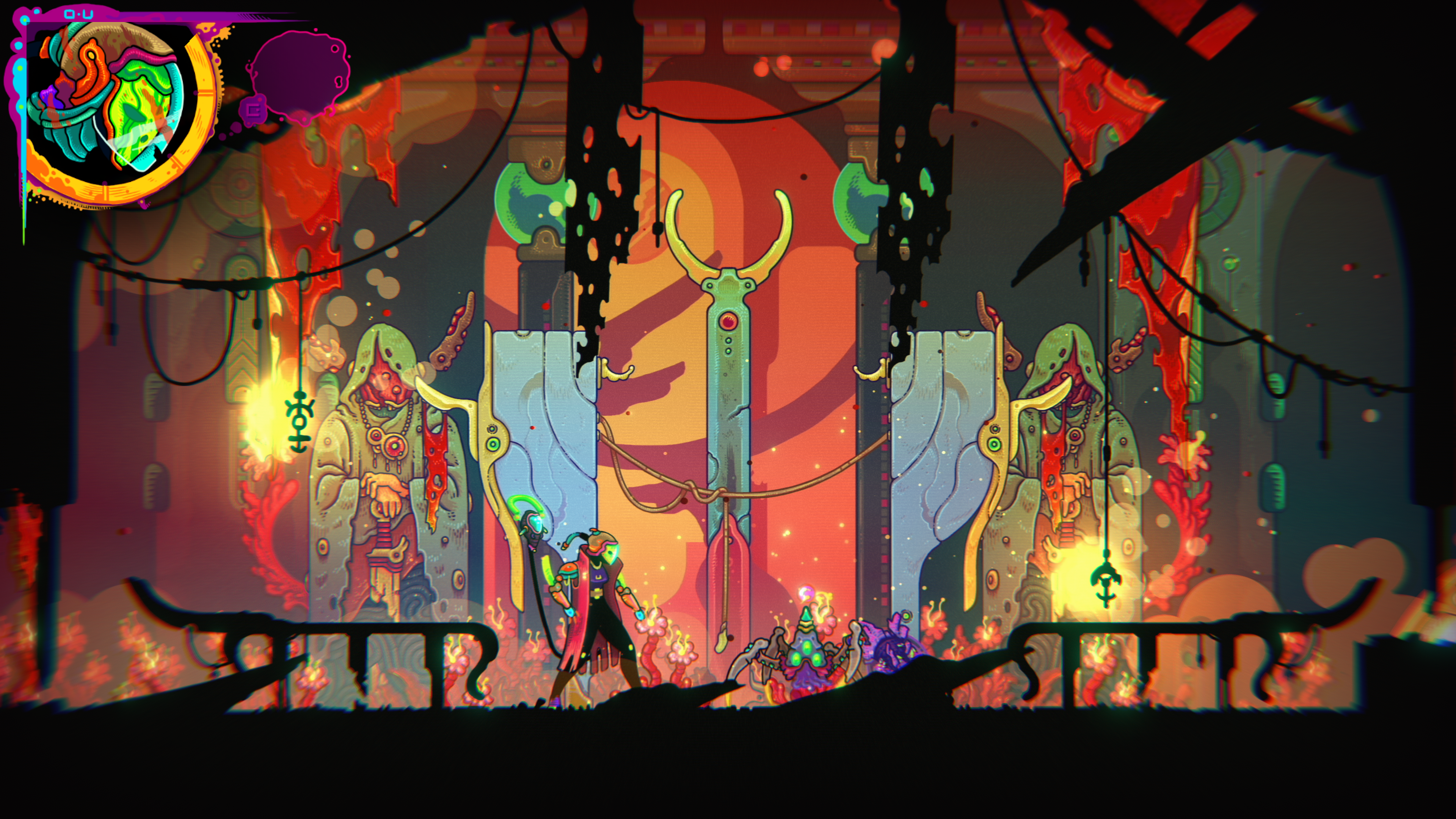
Final Thoughts
Ultros is a psychedelic adventure, one that is every bit as strange, compelling, and intriguing as its initial promise. It took me 12 hours to reach its conclusion, and yet I feel I’ve only begun to scratch the surface of its world, its memories, and its secrets. Though the narrative linearity of the loops reminded me a bit of Deathloop’s nesting doll structure, Ultros encourages exploration in a way that never feels tiresome or burdensome.
Hadoque crafted a well-balanced 2D adventure that has one of the most memorable art styles of any Metroidvania in recent memory. While I continue to enjoy my time on the Sarcophagus, I can’t wait to see what this studio does next.
Score: 8.5/10
Clint is a writer and educator based out of Columbus, OH. You can often find him writing about Middle English poetry, medieval games, or video games. He just finished a PhD in English at the Ohio State University. You can find his academic and public work at clintmorrisonjr.com.


